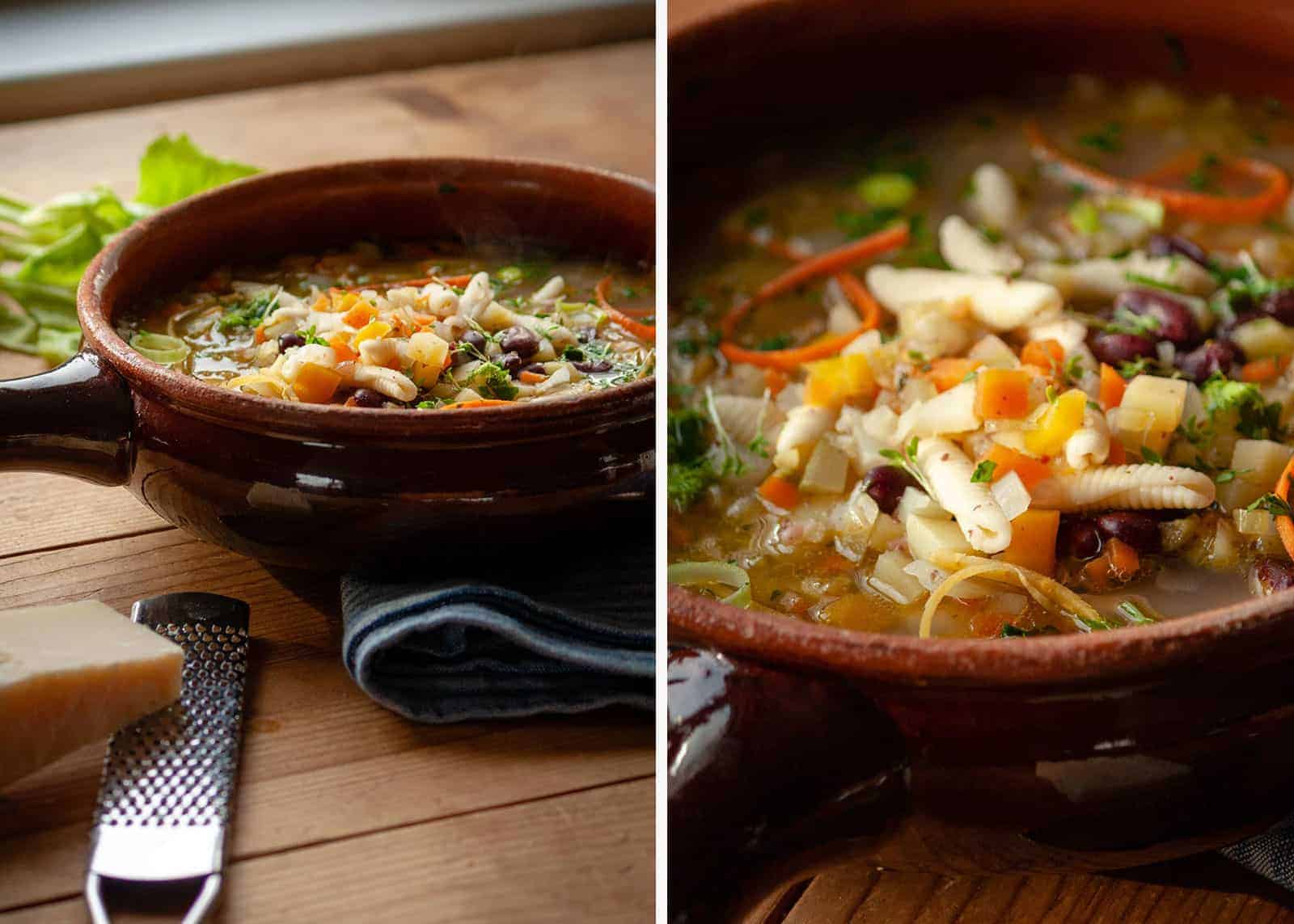
It's still cold outside. A light soup of fresh vegetables and herbs will warm both your heart and your stomach. The basic recipe for the vegetable soup unites not only the culinary diversity of Italy but also the beautiful legend of how a divided empire once came together at a table to make minestrone.
Jump to RecipeVegetables for the grumpy princess
Once upon a time, when Italy was still divided into many kingdoms, there lived a very beautiful but constantly grumpy princess. Even the king could hardly stand it any longer and decided to give his daughter to the man who managed to make her shine. From all over Italy princes came with coral necklaces, marble statues, truffles and other treasures. The princess remained unimpressed. Then a boy from the village came. He had collected vegetables and wild herbs on his way to the palace and wanted to cook for the princess. She was outraged and assured him that she would never eat such a minestrone (mishmash, mess).
Minestrone for everyone
The king was amused and allowed the boy to cook for the palace. This only annoyed the princess even more. She ran up and down the palace in a rage - and got very hungry. Because she could smell the tempting aroma of the "mixed vegetable soup". As always, the princess sat down at the table next to the king and princes. And lo and behold, upon eating the minestrone, the princess was positively radiant. The king and princes also loved the taste of this soup. They took the recipe back home to their kingdoms. Whether the village boy married the princess is not revealed in the legend.
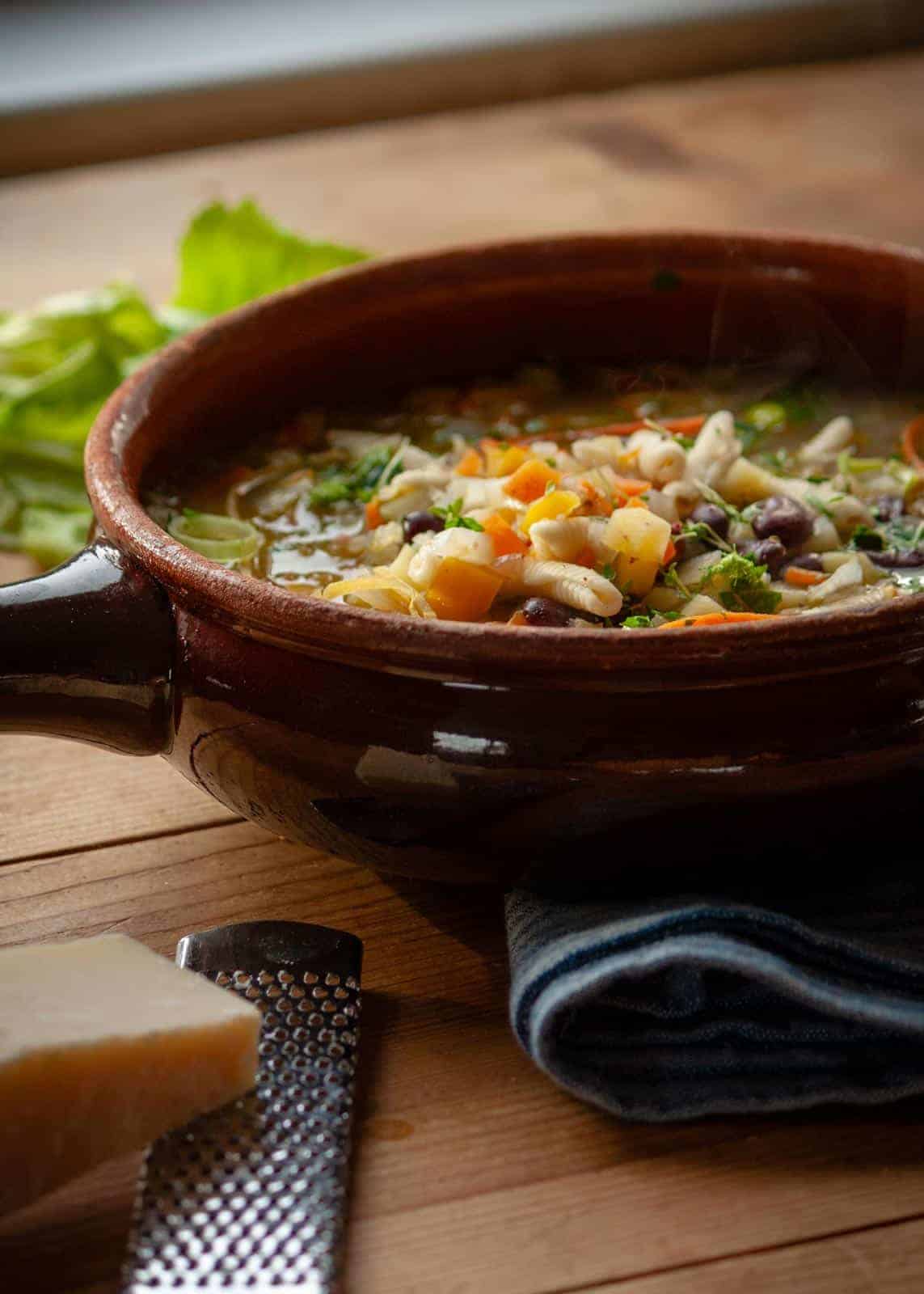
Regional refinements
The basic recipe for vegetable soup is the same throughout Italy and is refined with special ingredients depending on the region.
Northern Italy varieties
Friuli Venezia Giulia: Here barley finds its way into the minestrone. It tastes best when prepared the day before and warmed up just before serving. In Trieste, sauerkraut is also added to the soup.
Trentino-SouthTyrol: Also barley. A piece of bacon is often added to the soffritto (see recipe). In Trentino, tripe is also added to minestrone. They are sautéed with the soffritto, then tripe from veal must cook for 2 hours and from beef for 4 hours. Only then are the vegetables added to the soup.
Veneto: Beans
Lombardy: Rice
Aosta Valley: Mushrooms or chestnuts
Piedmont: Minestrone from Piedmont is particularly thick. In this region, tagliatelle or maltagliati and cabbage are a must.
Liguria: Green beans and above all lots of fresh basil give this vegetable soup its fine aroma.
Central Italy varieties
Emilia-Romagna: Potatoes
Tuscany: Chard, cabbage and pumpkin
Umbria: Spelt
Marche: According to an old tradition, the bottom of the soup tureen is covered with stale bread. This makes the soup lovely and creamy.
Lazio: Artichokes and Pecorino
Abruzzo: Lots of pepper
Molise: Field vegetables such as chicory, pulses
Southern Italy varieties
Campania: Tomatoes from San Marzano. This tomato variety has few seeds and gives the minestrone a beautiful red colour.
Apulia: Turnips, mint, pepper and Pecorino
Basilicata: Tomatoes, potatoes, basil and green beans
Calabria: Red onions from Tropea
Sicily: Ditalini pasta or rice. In the Trapani and Palermo region, people love the vegetable soup with a regional sweet root (cabbasìsi) or with the spiciness of some horseradish.
Sardinia: Small Sardinian gnocchi (malloreddus)
📖 Recipe
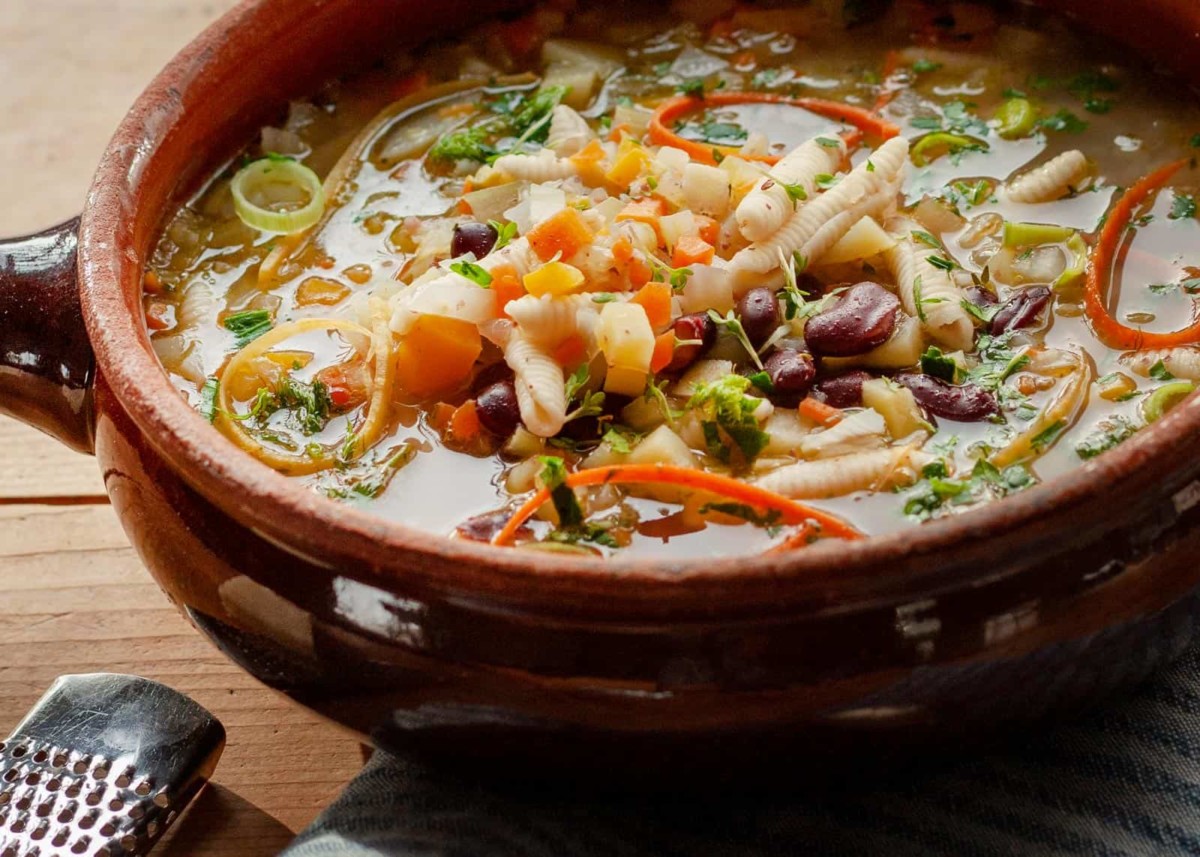
Minestrone
Ingredients
- 250 g beans, dried
- 2 bay leaves
- 1 pinch bicarbonate of soda
- 1 onion, small
- 1 leek
- 2 carrots
- 2-3 celery, sticks
- 3 tbs olive oil
- 1 ½ l stock, or water, hot
- 1 piece Parmesan, rind
- 1 courgette
- 3 potatoes, large
- 300 g chard
- salt
- pepper
- Parmesan, or Pecorino, grated
- 2 tbs parsley, fresh, chopped
Instructions
- Soak the beans overnight. The next day, strain and wash them before bringing them to the boil covered with fresh water. Bay leaves improve the taste and, like bicarbonate of soda, reduce the flatulent effect of pulses. Cook the beans on a low heat for 1-2 hours (depending on the type) with the lid on until tender. Add some hot water if necessary. Remove the beans from the heat and let them rest in the cooking water for 20 minutes. Strain and put aside.
- Clean the leek, onion, celery and carrots, chop them finely and place them in a large pot. Heat with olive oil and sauté the vegetables until the onion and leek are soft. This is called a soffritto. Pour hot water or stock into the soffritto. Use a knife to remove any dirt from the Parmesan rind. The cheese rind also goes into the pot. Reduce the temperature and simmer for 10 minutes.
- Meanwhile, cut the rest of the cleaned vegetables into small cubes and then add them to the minestrone. Now let everything simmer for 20-30 minutes until the vegetables are soft but still firm to the bite. Remove the Parmesan rind, add the beans (if desired, partially crushed) and finally season with salt and pepper. Serve the hot vegetable soup with plenty of grated Parmesan, a tablespoon of olive oil and freshly chopped parsley.
Notes
Nutrition
Tips
- It is advisable to cook pasta and rice separately and add them to the minestrone at the end. This makes them firmer to the bite.
- Remember to soak barley and pulses for a few hours or overnight before cooking. Change the water they are soaking in if it foams and be sure to put them in fresh water for cooking. Always cook beans without salt, as this would harden the skin. A pinch of bicarbonate of soda makes the skin softer. Chickpeas, on the other hand, should be cooked with salt and a pinch of bicarbonate of soda. Barley and pulses are added to the almost finished vegetable soup. Some of the beans are often crushed with a fork to give the minestrone a creamy consistency.
- Some of my friends add the juice of half a ripe lemon to the recipe. Although this does not correspond to any regional speciality known to me, the lemon juice gives the minestrone a refreshing aroma and a pleasant freshness.
Buon appetito!



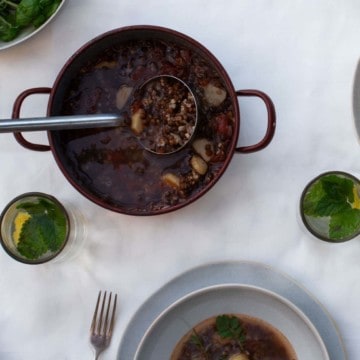
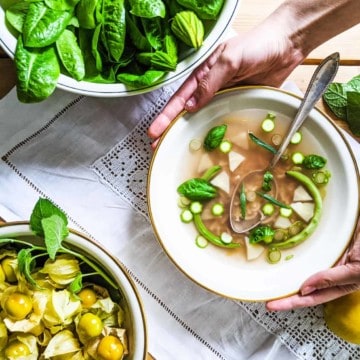
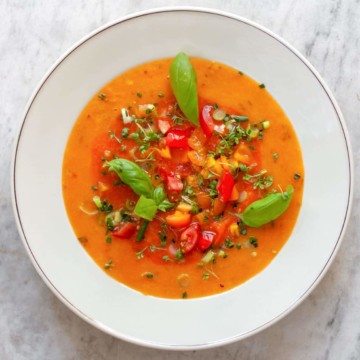
Leave a Reply